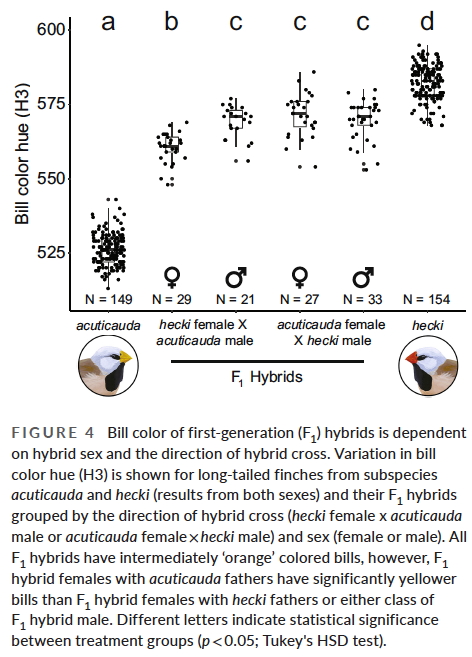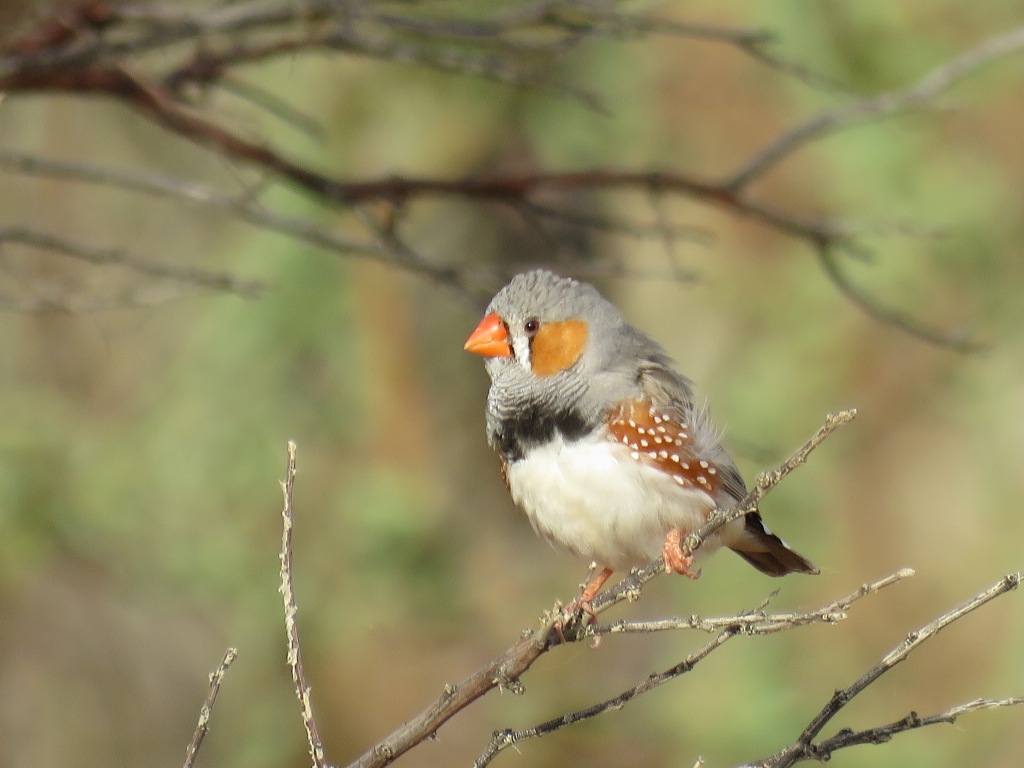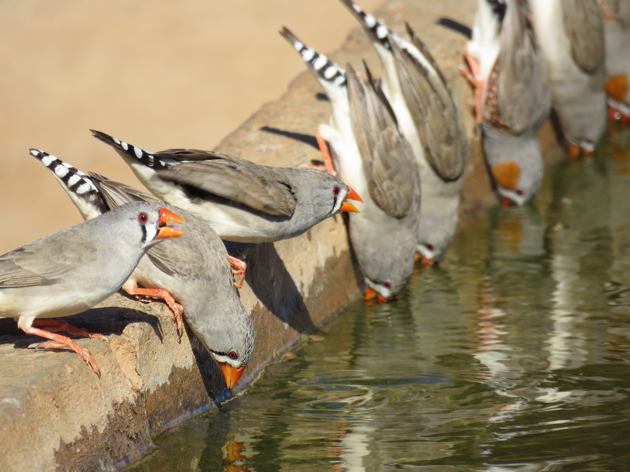1 PhD scholarship on ‘Mitonuclear incompatibility and speciation in Poephila finches’
3 PhD opportunities: ‘Physiological adaptation to Lead (Pb) contamination in an urban bird’; ‘Personality and behavioural responses to a lead-contaminated environment in an urban bird’; ‘Spatial and behavioural ecology of the endangered black-throated finch’.
We offer 1 full scholarship for an Australian candidate (or competitive International candidate), on the first project listed above (recently supported by ARC funding). For all other projects International or Domestic (Aus/NZ) candidates will be supported in their applications to apply for competitively awarded Macquarie University Scholarships. All projects will be based at Macquarie University, Sydney, Australia.
Sydney is a global power city rated in the world’s top-ten for economy, research and development, cultural interaction, live-ability, environment, and accessibility. Macquarie University is a major research-based institution situated in the heart of Sydney’s high technology precinct. It is considered one of Australia’s best universities and is rated among the top 1% of universities globally.
School of Natural Sciences, Faculty of Science and Engineering, MQ, is a vibrant community of teachers, researchers, professional staff and students working across a wide range of disciplines including animal behaviour, climate change, conservation, ecology, evolution, genetics and genomics, physiology, and environmental science.
The PhD’s will all be based in the research group run by Prof. Simon Griffith (https://griffithecology.com), and will be supported by his international collaborators in Europe and the US.
Projects
Mitonuclear incompatibility and speciation in Poephila finches
This project is focused on captive and wild populations of Poephila finches that are endemic to northern Australia. This project will examine the incompatibility between the mitochondrial and nuclear genomes, its effect on mitochondrial respiration, and how that contributes to the species barrier between divergent forms. The work is in collaboration with Daniel Hooper (US) and Antoine Stier (France), and will use bioinformatics and physiological assays mostly in the laboratory.
Physiological adaptation to Lead (Pb) contamination in an urban bird
We have identified resistance to lead poisoning in the population of house sparrows in Broken Hill, Australia’s oldest and largest mining towns. This project will examine the molecular and physiological mechanisms that allow sparrows in this population to thrive in this heavily contaminated environment, providing a case study of evolution in an urban/industrial environment. This project will be based in the field and laboratory and use a combination of molecular and physiological assays.
Personality and behavioural responses to a lead-contaminated environment in an urban bird
This project will focus on the house sparrow population of Broken Hill and investigate the personality traits and spatial and behavioural ecology that permit sparrows to thrive in the heavily contaminated areas of the town. The project will largely be based in the field, in the town of Broken Hill, NSW.
Spatial and behavioural ecology of the endangered black-throated finch
There is an urgent need to understand the spatial and behavioural ecology of the southern black-throated finch, one of Australia’s most iconic endangered birds. The work will be focused on a remnant population of birds near Townsville and investigate movement ecology with automated radio-tracking in parallel with studies of breeding and behavioural ecology to identify key vulnerabilities. The work will be in collaboration with Lyanne Brouwer (JCU, Townsville, QLD), and require long periods of fieldwork.
References
Poephila speciation
Lopez KA, McDiarmid CS, Griffith SC, Lovette IJ, Hooper DM (2021) Evaluating evidence of mitonuclear incompatibilities with the sex chromosomes in an avian hybrid zone. Evolution, 75, 1395-1414; Hooper DM, Griffith SC, Price TD (2019) Sex chromosome inversions enforce reproductive isolation across an avian hybrid zone. Mol Ecol, 28, 1246-1262.
Urban contamination
Andrew SC, Taylor MP, Lundregan S, Lien S, Jensen H, Griffith SC (2019) Signs of adaptation to trace metal contamination in a common urban bird. Sci. Total Environ. 50, 679-686.
Black-throated finch conservation
Reside AE et al (2019) How to send a finch extinct. Env. Sci & Policy 94 163-173.
Qualifications
We are looking for a candidate who:
- holds a (research) master degree or honours degree with distinction* in a relevant field, such as Evolutionary Biology
- is curiosity driven and passionate about fundamental research in the context of evolutionary ecology, and strongly motivated to obtain a PhD degree
- is proficient in the English language*
- is a team player, willing to work with a diverse group of researchers and technicians, and can also work independently
*Specific requirements as (see: https://www.mq.edu.au/research/phd-and-research-degrees/how-to-apply)
Ideal candidates will also have some of the following
- previous experience of bird ringing (or animal handling) and conducting fieldwork in harsh environments
- strong quantitative skills in statistics and bioinformatics
- have strong communication skills and motivation to disseminate results to both scientific peers and a broad audience
Conditions
Macquarie University offer an MQRES Scholarship, for the duration of the PhD. The scholarship comprises the equivalent of a full-fees award and stipend at the current rate of AU$ 32,000 per annum.
Application
The selection procedure will proceed in three stages:
- First application (17/02/23)
- Development and submission of full application (International 03/03/23; Domestic 30/04/23) Assessment by selection committee (mid-June)
- Start of PhD enrolment for successful candidates (07/08/23)
Please submit your initial application via email to simon.griffith@mq.edu.au before 11:59 pm 17th February 2023. Provide the following in your application:
- Cover letter (1 page max.): a letter introducing yourself, describing your motivation and qualifications to conduct this scientific research, and your expectations of the PhD programme
- CV (2 pages max.)
- Academic records (transcript of undergraduate degree and a certified copy or scan of your MSc or honours degree certificate.
- Proof of sufficient competence in English e.g. IELTS, TOEFL scores. (unless your degree was in an English speaking country)
- Names and contact details of two academic references
- Initial research project idea: brief description of the research question(s) that you wish to address with respect to the advertised topic and your approach to address the research question(s) (300 words max.)
Applications that do not satisfy the requested format will not be taken into consideration.
Macquarie University, is committed to providing a working environment where each individual is valued, respected and supported to progress. Our priority is to ensure culture, policies and processes are truly inclusive and that no-one is disadvantaged on the basis of their Aboriginal and Torres Strait Islander identity, gender, culture, disability, LGBTIQA+ identities, family and caring responsibilities, age, or religion. We encourage everyone who meets the selection criteria and shares Macquarie University’s values of scholarship, empowerment and integrity to apply. Learn more about our progress towards Equity, Diversity and Inclusion: https://staff.mq.edu.au/work/diversity-and-community.
Information
For information you can contact:



 Our attempts to understand avian behaviour usually focus on important components of life such as foraging, territorial defence, breeding and anti-predation strategies. In our
Our attempts to understand avian behaviour usually focus on important components of life such as foraging, territorial defence, breeding and anti-predation strategies. In our  The habitat of the study site near Fowlers Gap research station is a very open grassland with small patches of acacia trees, such as those in this ephemeral creek line.
The habitat of the study site near Fowlers Gap research station is a very open grassland with small patches of acacia trees, such as those in this ephemeral creek line. One of the social hotspots was found in the dead tree to the left of this picture. Social hotspots were found in both living and dead trees, and they didn’t differ in an obvious way from other trees or bushes in the local vicinity.
One of the social hotspots was found in the dead tree to the left of this picture. Social hotspots were found in both living and dead trees, and they didn’t differ in an obvious way from other trees or bushes in the local vicinity.  Large accumulations of droppings were found underneath social hotspots, indicating their prolonged use by large numbers of birds.
Large accumulations of droppings were found underneath social hotspots, indicating their prolonged use by large numbers of birds.







